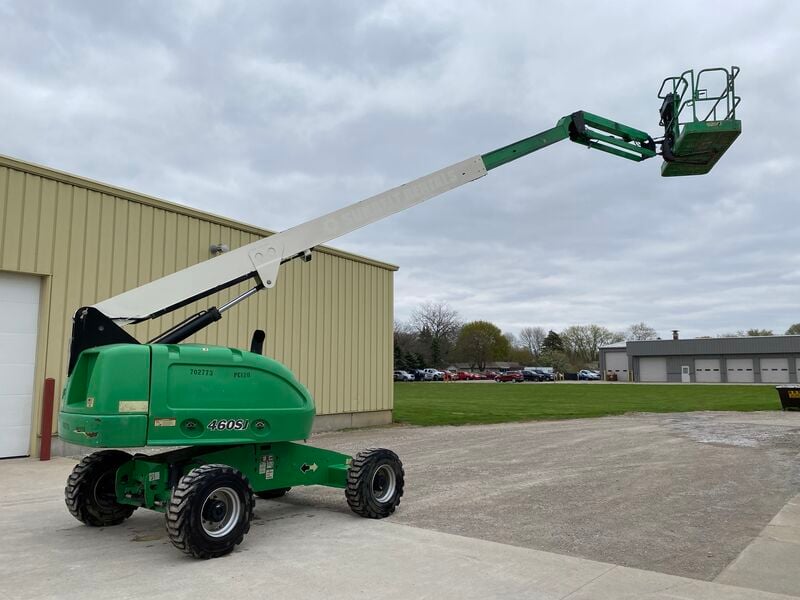
Boom lifts are extremely useful pieces of equipment for many types of worksites. Generally, this equipment is used to lift materials, professionals, and tools to elevated areas. They open up the ability to access and work safely in otherwise unreachable locations.
However, not all boom lifts are the exact same style or type. They can vary in capability as well as their quality-of-life features. If you’re in the market for one, it’s a good idea to get knowledgeable about your choices. Below, we will cover the different boom lift types, boom lift sizes, and their various benefits.
Telescopic boom lifts, like other boom lifts, have a platform that allows workers and equipment to be elevated on the end of an arm. This arm can extend out like a telescope, allowing for greater reach and earning it its name.
The platform can elevate to heights of over 180 feet, though many are closer to the 40-80 foot range. This makes this boom lift ideal for maintenance and construction work on tall buildings and towers.
Due to their long booms, telescopic boom lifts are usually wider at the base and are a little more challenging to turn, so they’re best used in more open locations that don’t require tight, precise navigation.
Articulating boom lifts also earn their name. Their platform is also attached to the end of an arm, but this arm is attached to a base that can rotate. In this way, a user can lift themselves vertically while also actively changing their position horizontally. Height-wise, these go up to 125 feet, falling a little short of the telescoping boom lifts.
The tradeoff is the added flexibility in the range of motion. They may also have an additional range of motion in more than one section in the arm, allowing for a lot of versatility in movement. This makes articulating boom lifts ideal for work in hard-to-reach areas that may have obstacles or barriers to maneuver around.
Atrium boom lifts or Spider Lifts tend to be smaller and weigh less than their counterparts. They move using tracks, and they have outriggers that fold down to secure them when deployed for stability. The tracks make them ideal for moving over more challenging or uneven terrain.
Due to their design and use of outriggers (which are spread out), crawler atrium lifts have a more evenly distributed weight. This helps make atrium lifts a better option for work areas where the ground could be damaged, such as pavement or grassy areas. They can also operate on uneven ground.
Within these different boom lift types and boom lift sizes, there are many other differences and features worth considering, such as fuel source. You now have options for gas, diesel, electric, and hybrid versions of different boom lifts.
Like other vehicles, boom lifts come in four-wheel and two-wheel drive versions, depending on the type of terrain these will be used in. In addition to their height, boom lifts have varying sizes of platforms, so understanding how much room you need for workers and materials helps determine how large of a platform you need.
Finally, you can choose different types of tires, such as foam-filled ones, to accommodate the worksite environment. Other considerations include:
If you’re ready to find the perfect boom lift to improve your worksite efficiency, consider sourcing from Aerial Titans. Aerial Titans features a variety of boom lifts and a continuously changing inventory of efficient equipment at fair prices.